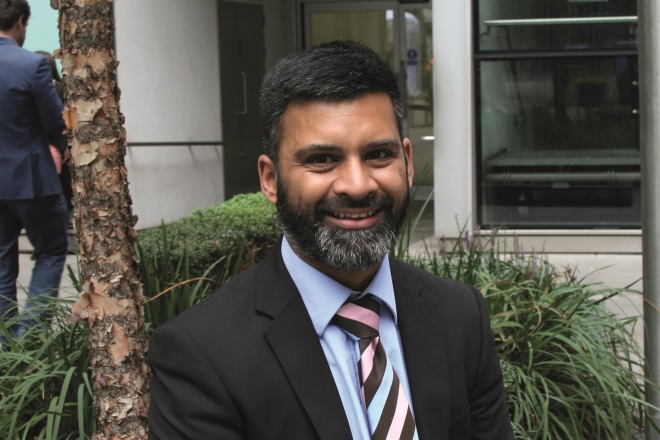
MAG / The Pharmaceutical Journal
In 2005, frustrated by the slow pace of change in its programme to modernise NHS pathology services, the Department of Health (DH) announced a radical independent review under the chairmanship of Lord Carter of Coles. It was the start of Carter’s efficiency programme; reducing variation across trusts in England and demanding services shape themselves to deliver high-quality, patient-focused care, using new technology and new ways of working.
Almost a decade later, in 2014, Carter turned his attention to acute hospital trusts. This review was to be even more far reaching, covering multiple aspects of hospital care from wards to operating theatres, examining procurement and, again, pathology. It focused attention on the potential savings that can be made by the NHS from reducing unwarranted variation – up to £5bn a year by 2020–2021, with £0.8bn of this saving potentially coming from ‘hospital pharmacy and medicines optimisation’.
As part of this work, all trusts are expected to develop a Hospital Pharmacy Transformation Programme by April 2017, with initial plans expected by October 2016. These plans will be collated at a regional level for sign-off by Keith Ridge, the chief pharmaceutical officer for England.
Within the detail of the review are proposals that could lead to fundamental changes in pharmacy departments. These include: a target that by 2020 more than 80% of trusts’ ‘pharmaceutical resource’ is spent on direct medicines optimisation, medicines governance and safety remits; reviewing how ‘infrastructure services’ are provided and the opportunities for outsourcing or providing them with other trusts; moving to electronic prescribing and medicines administrations systems from paper-based forms; ensuring that medicines coding is accurately recorded in NHS reference costs; and consolidating medicines stockholding and modernising the supply chain to reduce the number of deliveries per day. Other elements of the review include benchmarking data and national moves around medicine pricing and procurement.
If Carter says anything to me, it says there is a lot that we need to standardise and work with others to achieve
The proposals amount to an efficiency target of more than 3% a year for pharmacy departments. But the Carter recommendations should not be seen as just about cutting costs: by focusing on ‘unwarranted variation’ there are opportunities to tackle differences in care that may be detrimental to patients, as well as those that represent a waste of money for the NHS. But delivering both financial savings and improved care for patients is going to take a great deal of time and effort, whatever a trust’s starting point.
The GSTT experience
At Guy’s and St Thomas’ Foundation Trust (GSTT), Tim Hanlon, chief pharmacist and clinical director of pharmacy and medicines optimisation, says the Carter review is about ‘challenging assumptions’ and encouraging the trust to do things differently. He sees working across a bigger area with partners in other NHS organisations as a theme of the Carter review and a way for the trust to release savings. “If Carter says anything to me, it says there is a lot that we need to standardise and work with others to achieve,” he adds.

Source: MAG / The Pharmaceutical Journal
Guy’s and St Thomas’ Foundation Trust has already made several million pounds of savings each year through its outsourcing of outpatient pharmacy services, says James Salt, the trust’s newly appointed hospital pharmacy transformation programme manager
This is partly because the trust has already made some of the big money-saving changes envisaged in Carter’s work. For example, Celesio — through its LloydsPharmacy brand — has provided outpatient pharmacy for many years. James Salt, the trust’s newly appointed hospital pharmacy transformation programme manager, says this has contributed several million pounds of savings each year – but it does mean that if the trust is to make the level of savings envisaged in the Carter review, it will have to look elsewhere.
Nonetheless he is enthusiastic about the task ahead: “The broad message is fantastic – work on that unwarranted variation and be as productive and efficient as you can be.” But he concedes that it’s a “big ask”.
So what is the trust going to do? A major piece of work — recently backed at board level and getting under way in October 2016 — is an end-to-end review of the clinical pharmacy process. This will look at the path of medicines into and through the trust until they reach the patient.
The review encompasses everything from procurement and delivery, through to patients being given medicines at home or in a healthcare setting. Salt expects the scoping work on this to be completed by mid-November 2016 and then the resulting report to be available at the end of March 2017. This report will then feed into the trust’s final submission of its transformation plan.
The Carter review provides an excuse to look at pathways afresh — it is a trigger for change
“Currently these are pathways that have evolved rather than being planned,” says Salt. “The Carter review provides an excuse to look at them afresh. It is a trigger for change.”
Carter highlighted the time taken up by dealing with deliveries — up to 30 deliveries a day in some trusts, which he suggested could be reduced to fewer than five. Guy’s and St Thomas’, which has two large sites, is already broadly in line with this target. It also has good stockholding and procurement practice, says Salt, two other ways suggested in the Carter review that trusts could make substantial savings. Overall, he says: “I don’t think it is anything that trusts should kick back against.”
Carter envisaged the consequences of tackling some of these ‘infrastructure’ issues as freeing pharmacists and other staff to spend more time on patient-focused activities – he suggested 80% of their time should be spent on patient-facing work.
However, there will be challenges with this. One issue is definitions — what is the 80% made up of? Does it include, for example, time spent on individual funding requests for unapproved drugs that a clinician wants their patient to be treated with? Work such as this can be time consuming for pharmacists but it is not time spent on the ward or sitting down with a patient.
Carter seemed to have inpatients in mind when he set the 80% ‘target’ but there is some complex outpatient work at GSTT, says Hanlon. “I want quite a bit of my clinical activity [to be] focused on outpatients. There are some high cost drugs there but there are issues around safe care as well,” he says. “Part of the discussion is about the complexity of the outpatients in a trust like this. We do some very challenging outpatient activity.”
Adam Crampsie, head of clinical operations at Celesio, believes that outsourcing can help towards the 80% target by making trust staff available for ward-based activity, and taking on “issues such as ordering and stock management” on the outpatient side.
There may also be opportunities for trusts to improve care through greater use of technology. Getting better data will be a way of both benchmarking against other trusts and seeing the outcome of changes over time. Hanlon has been instrumental in getting the chief pharmacists of the Shelford Group of trusts – which represents ten leading tertiary trusts – together to discuss issues of common interest, such as refinements to the pharmacy dashboard, a tool developed nationally to allow metrics for hospital pharmacy to be compared across trusts.
This is not just pharmacy; it is a medicines optimisation programme, within which pharmacy is a part
Informatics is another area where changes could drive better and possibly more efficient services: on paper, the trust appears to be ahead of many, with a well-established electronic prescribing system. But has it made the cultural shift that electronic prescribing can require? “We already have the safety benefits you get from electronic prescribing,” says Hanlon. “It is the last bit that is more difficult – the transformation that you make to work processes.”
Hanlon says there is a need for real time data to drive good management and leadership decisions. “This is a clinically-led organisation. It is really important that the information available to [clinicians] is robust.” He adds that GSTT’s hospital transformation programme does not sit in a silo and has clear links with other Carter programmes. “This is not just pharmacy; it is a medicines optimisation programme, [within] which pharmacy is a part,” he explains.
However, there are other services delivered by the pharmacy department that could benefit from being provided across a larger area.
Inter-trust cooperation
For the past few years, the NHS in England has not had many vehicles to drive – or enforce – inter-trust cooperation. But the Sustainability and Transformation Plans (STPs), which are being developed for 44 areas in England, are providing a framework for discussions about which services could be provided at scale.
For a trust this size the opportunities must be around doing things at scale or undertaking some more work for someone else
“For a trust this size the opportunities must be around doing things at scale or undertaking some more work for someone else,” says Hanlon.
In south east London – where Amanda Pritchard, the chief executive of GSTT, is leading the local STP – this is starting to happen. Discussion is under way about aseptic services, which prepare certain high-risk medicines under sterile conditions. “There’s a consensus among the chief pharmacists of Lewisham and Greenwich Trust, King’s College Healthcare Foundation Trust and GSTT that we have to look at our aseptic services as a whole,” says Salt. “I would expect an outline plan for how it could look to be submitted in March [2017].”
This could, of course, mean some staff across the trusts are expected to work from a different location. “Anyone who works in the NHS wants to deliver their best and there’s a realisation that what we are doing now might not be the best,” says Salt, citing physical surroundings as one area that could improve. “There’s an acceptance that something has to be done. It is an example of another service that has evolved as oncology grew.”
Hanlon says that for smaller trusts with a few hundred beds and a handful of clinical trials, it is hard to justify providing some of the more specialist pharmaceutical services because the staff may not get enough experience and the costs will be disproportionately high. He suggests that some district general hospitals will be looking at some of these services and asking whether they should do them. For larger trusts, the priority will be what can be done at scale.
GSTT is also one of the few trusts to retain a manufacturing unit, which produces small batches of medicines that the trust needs and perhaps cannot obtain elsewhere. This is one area that is already seeing some changes, which could contribute towards savings. The unit is becoming more commercially focused — with input from the trust’s commercial directorate — and is looking at opportunities to sell products elsewhere in the NHS. It is also assessing more vigorously whether it would be best to make or buy in individual medicines.
Salt describes the unit as the ‘jewel in the crown’ for GSTT, filling a niche for manufacture at volumes considered too low by ‘big pharma’ and often supporting clinical trials within the trust.
Reshaping the workforce
What the changes — especially the end-to-end review — will mean for staff is not yet clear. But staff training and development is one of the streams of work that is being developed. “From my perspective as the senior responsible officer for education, training and developing the workforce, the key thing is to identify what the other workstream’s operating models will be and how they want to work in the future,” says Aamer Safdar, principal pharmacist lead for education and development at GSTT. Future needs will be mapped and compared with the workforce today, and gaps and professional development needs identified. He expects it will take until close to the March 2017 submission date to carry out this work.

Source: MAG / The Pharmaceutical Journal
The trust will target funding for continuing professional development, so training matches job roles and ensures a return on investment, says Aamer Safdar, principal pharmacist lead for education and development at Guy’s and St Thomas’ Foundation Trust
Reshaping the workforce will mean giving some staff new skills to deliver changed or expanded roles. One of the areas where this is likely to happen is in prescribing, with more pharmacists taking on independent prescribing roles. However, Safdar points out the limited funding available for continuing professional development and the need to target this effectively. “It’s making sure that they will be used as independent prescribers once they are trained,” he says. “For example, if they are in community services where they go into patients’ homes and review medications, then that is a different situation to being in hospital where there are other prescribers around.
It is about making certain that the people who are being put forward to do independent prescribing have it in their job roles to do it – to give a return on the investment
“It is about making certain that the people who are being put forward to do independent prescribing have it in their job roles to do it – to give a return on the investment. We have to see where the need is.”
Another area that Safdar is looking at is benchmarking workforce indicators against other trusts in a meaningful way. High level indicators, such as the total number of staff, may not help much, but the trust is working with other providers in south east London to see if more detailed information can be useful.
But with plans at such an early stage it can be hard to offer staff much meaningful engagement. It’s too early for the 360 members of staff in the department to feel they ‘own’ the plan, says Salt, but they are being encouraged to come forward with suggestions for improvements. So far, there have been more than 60 suggestions, including changes to shift patterns and changes to labelling, all of which are being looked at. Staff get the chance to quiz Salt at regular meetings. “There’s a lot of enthusiasm from, for example, the preregistration pharmacists and we get a lot of suggestions and emails from them. We need that enthusiasm and dynamism.”
While there may be a need to change the way the service is delivered, Salt does not see there being any plan to reduce pharmacy staff numbers and instead suggests there may be a need to increase the number of pharmacy technicians.
Like all trusts, GSTT has limited capacity for this transformation work in its pharmacy department – both among pharmacists and managers. Hanlon says: “Some trusts are approaching the Carter report as business as usual – just more of what they are doing. I can see the allure of that but at GSTT we have taken the decision to approach it as a proper programme with a proper programme methodology, rather than people just seeing it as part of their day job.”
The challenge will be how quickly improvements and savings can be delivered. Salt describes the current position as “pushing a boulder up a hill… in a few months’ time it will start rolling on its own”.
Quality is key
For Hanlon, the most important thing is getting quality right. “I think the cost savings will fall out of the plan. My experience has been that if you drive the quality then the money will fall out.”
As an example, he highlights pharmaceutical acuity. Pharmacists often see every patient to work out who will benefit from their input. A pharmaceutical acuity tool — similar to those used by nurses — can now be used to highlight those who would benefit most. “The issue is, will it be robust enough to say I don’t need to see those other patients? But I think that is the future,” says Hanlon.
Carrying out medicines reconciliation within 24 hours of coming into the trust may also help flag up patients who need intervention.
These approaches have the potential to improve quality of care but may also save money by not using pharmacists where they will have little impact.
The sort of wholesale transformation programme outlined in the Carter review may be a first for many pharmacy departments but the parallel with pathology services should not be ignored. The recommendations Carter put forward for hospital laboratory services were adopted slowly in many parts of the country and some of the hoped for improvements in quality and cost have been slow to emerge. In the summer of 2016, trusts were suddenly given an ultimatum to produce plans to consolidate pathology within a few weeks. It’s a situation no chief pharmacist would want to be in.
“Being in control of your own destiny is a very important thing – and I can imagine at some stage that might be taken from an organisation,” says Hanlon. “It’s a very important principle to retain that control – and to do good things – before it is taken away from you.”
